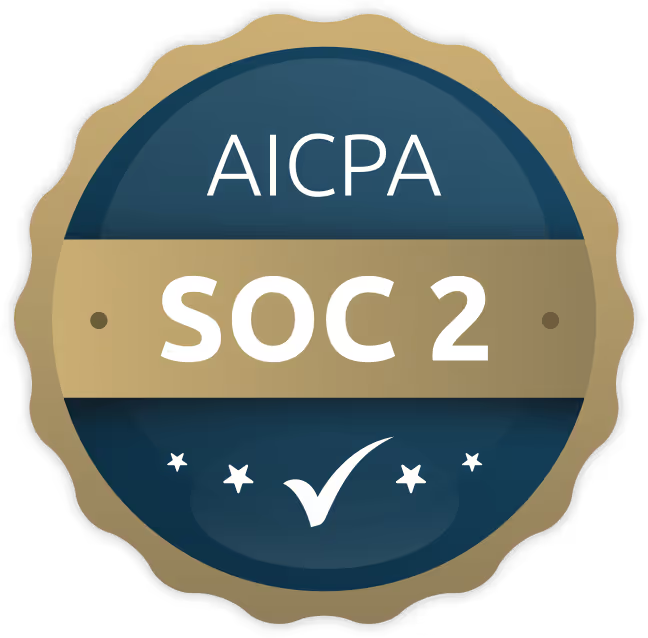
Imaginez ceci. Deux entreprises ont les mêmes objectifs d'embauche à atteindre - nous parlons d'une centaine de nouveaux employés chaque mois. Et bien que les entreprises aient les mêmes objectifs en matière d'effectifs, elles utilisent stratégies d'embauche très différentes. L'un d'eux met l'accent sur le rendement, en faisant entrer le plus de candidats le plus rapidement possible. L'autre se concentre sur la qualité de l'embauche, de sorte qu'ils sélectionnent autant de candidats que possible en haut de l'entonnoir.
Quelle stratégie est la plus efficace pour les centres d'appels ? Discutons.
Quel est le débit d'embauche ?
TechTarget définit le débit est une mesure du nombre d'unités d'information qu'un système peut traiter au cours d'une période donnée. Dans le monde de l'embauche, débit se réfère à le nombre de candidats qui se retrouvent dans l'entonnoir de recrutement, ce qui aide les équipes d'embauche à comprendre le nombre de candidats dont elles ont besoin pour atteindre leurs objectifs d'embauche. Le chef des opérations relatives aux talents chez WellTech, Luke Eaton, tombe en panne le concept encore plus loin du point de vue de l'embauche :
« Dans le domaine du recrutement, nous entendons le nombre de candidats à réussir notre processus de recrutement, quelle que soit l'échelle de temps convenue par l'entreprise. Par exemple, ce trimestre, (x) de nombreux candidats au début nous ont permis (y) beaucoup d'embauches à la fin.
À l'inverse, si une entreprise devait embaucher 100 nouveaux employés chaque mois, elle peut se rendre compte qu'elle doit présenter au moins 1 000 candidats chaque mois pour atteindre cet objectif d'embauche.
Utilisation du débit comme mesure dans les centres de contact
De nombreuses entreprises et centres d'appels ont du mal à répondre aux demandes d'embauche. Presque moitié des gestionnaires de centres de contact visés par un sondage ont estimé que les taux élevés de roulement des agents constituaient le plus gros problème opérationnel auquel ils étaient confrontés. Le désengagement constant laisse les équipes d'embauche à volume élevé dans une frénésie d'embauche sans fin, tandis que les dirigeants tentent de planifier et de créer des prévisions financières parmi ces parties mobiles.
Il peut certainement être difficile d'essayer de faire croître une équipe et d'atteindre les objectifs de revenus tout en atténuant le risque de frais généraux et l'inefficacité, dit Cofondateur de Clevenue, Alex Handsaker. Il ajoute : « Le débit est un concept utile, en particulier pour recruter dans des entreprises à forte croissance avec de grands objectifs d'embauche, où le recrutement est continu.
Le débit témoigne de l'efficience à différentes étapes du processus d'embauche. Par exemple, il peut y avoir un taux de conversion à chaque étape du pipeline candidat, et ce taux est mentionnée comme débit d'entonnoir.
Bien que le débit puisse démontrer l'efficacité ou les goulots d'étranglement dans un processus d'embauche, une seule source suggère que c'est préférable parce que c'est une mesure que les équipes RH peuvent contrôler (contrairement à tant d'autres aspects du comportement des candidats que les recruteurs ne peuvent pas contrôler, mais qui ont un impact sur les KPI ministériels).
Scénarios d'embauche à débit
Un rendement élevé aide à donner aux équipes d'embauche une visibilité sur le nombre de candidats qui se déplacent dans le pipeline, mais est-ce quelque chose sur lequel elles devraient se concentrer ? Des résultats d'embauche efficaces sont-ils possibles si l'accent est mis sur la quantité plutôt que sur la qualité ? Considérez ce scénario commun axé sur la quantité :
Scénario 1 : Le débit comme point de mire pour atteindre les objectifs d'embauche
Un centre d'appels à croissance rapide doit embaucher une centaine de nouveaux employés chaque mois, et l'équipe d'embauche en fait le plus grand nombre possible pour atteindre ces objectifs. 150 candidats sont sélectionnés chaque semaine pour passer l'entrevue. Il n'y a que deux gestionnaires de centres d'appels disponibles pour mener ces entrevues de dernière ronde. Cela signifie 75 entrevues par gestionnaire par mois, ou 3 à 4 par jour ouvrable. Chaque fois que l'on est occupé ou qu'on est loin du bureau, il y a un goulot d'étranglement et l'équipe ne peut pas faire parvenir les offres aux candidats aussi rapidement qu'elle le pensait, de sorte que les candidats commencent à se retirer du processus de recrutement. L'équipe de recrutement double à ce stade, augmentant le nombre de candidats dont elle a besoin par embauche, tandis que les efforts et les coûts augmentent simultanément. Les efforts déployés par les équipes d'embauche pour créer du volume sont gaspillés. Plus important encore, l'accent mis sur le débit distrait le fait que la qualité des candidats a baissé et que l'attrition est perdue. Par conséquent, le cycle se répète et les impacts négatifs s'aggravent au fil du temps.
Considérons maintenant un autre scénario où un centre d'embauche à volume élevé se concentre plutôt sur des embauches de qualité :
Scénario 2 : La qualité de l'embauche au centre de l'atteinte des objectifs d'embauche
Un centre d'appels en pleine croissance doit embaucher une centaine de nouveaux employés chaque mois. Seulement 25 personnes passent le processus de sélection initial chaque semaine. Comme il n'y a que deux gestionnaires de centre d'appels disponibles pour mener les entrevues de dernière ronde, l'équipe d'embauche se concentre uniquement sur les candidats de la plus haute qualité. L'équipe d'embauche met en œuvre un dépistage impartial de l'IA en haut de l'entonnoir d'embauche en évitant les goulots d'étranglement lors des entrevues de dernière ronde. Cela augmente l'efficacité, ce qui fait que les gestionnaires et les équipes d'embauche se sentent bien au lieu de se sentir épuisés. Les gestionnaires d'embauche peuvent se concentrer sur leur travail. Par conséquent, l'expérience des candidats est meilleure, de sorte que moins de candidats abandonnent le processus d'embauche. Tout le monde est également encouragé par le fait que l'accent mis sur la qualité a permis de réduire considérablement les taux d'attrition et que les embauches restent beaucoup plus longtemps que lorsqu'elles se sont concentrées uniquement sur les effectifs.
Les deux entonnoirs obtiennent le même volume de sortie, MAIS le scénario 2 coûte moins cher et obtient un meilleur rendement. Le scénario 2 (celui qui ne se concentre pas uniquement sur le débit) est préférable pour les centres de contact.
Un auteur recommande à la recherche de compétences particulières pour aider à résoudre le problème de goulot d'étranglement du débit. Le plus récent rapport sur le rendement de la Direction générale de l'embauche révélé la sélection des bonnes compétences dès le début du processus d'embauche était un moyen très efficace de réduire l'attrition dans les centres d'appels. Cela signifie que si les centres d'appels sélectionnent des artistes qualifiés, ils peuvent trouver des candidats de meilleure qualité au travail qui attirent moins.
En fin de compte, la qualité des candidats l'emporte sur la quantité de candidats. Une meilleure sélection au sommet de l'entonnoir mène finalement à une meilleure adhérence après qu'une offre d'emploi a été faite.
Une façon plus saine pour les entreprises de penser au débit
Les scénarios ci-dessus décrivent les dures réalités de l'embauche. Si votre équipe pouvait savoir avant l'entrevue qui a les compétences nécessaires pour réussir au travail, choisiriez-vous quand même d'interroger plus de personnes pour déterminer le rendement ?
De ce point de vue, il est logique d'être plus sélectif au cours du processus d'embauche. Bien que le débit puisse servir de moyen d'arriver à une fin, il le fait à un coût qui augmente en volume de recrutement.
Débit des recettes, une méthode qui n'ajoute du personnel que selon les besoins en fonction des données réelles (non projetées qui peuvent mener à des mises à pied !) est une mesure plus saine sur laquelle les équipes d'embauche à volume élevé doivent se concentrer plutôt que sur le simple rendement lui-même.
Cependant, ne réduisez pas entièrement le débit. Il peut être une bonne mesure de l'efficience lorsqu'il est ventilé par étape du processus d'embauche. Pour exemple, si les taux de décrochage sont élevés à l'étape de la présélection, cela pourrait indiquer qu'il y a un problème avec la description de travail. Le rendement peut être utile, mais ne devrait jamais être le seul objectif des recruteurs.
Les équipes d'embauche ayant des mandats à volume élevé doivent faire passer les candidats de manière sélective au sommet du processus d'embauche afin d'épargner des ressources plus tard.
Ajurer le bon scénario d'embauche
Il existe de nombreuses mesures d'embauche à viser, et la bonne pour chaque entreprise dépend de son scénario d'embauche unique. Le débit dans les centres d'appels peut devenir un moyen de survie. Pour répondre à la demande d'un bon service à la clientèle, des ventes, du soutien informatique et d'autres rôles axés sur les clients, les équipes d'embauche continuent à embaucher 24 heures sur 24. Cela dit, le débit ne devrait pas être la solution, il mène simplement à de plus grandes inefficacités à l'avenir. Les équipes d'embauche ayant des mandats à volume élevé doivent faire passer les candidats de manière sélective au sommet du processus d'embauche afin d'épargner des ressources à l'avenir.
DLDR : Le débit doit être soigneusement réfléchi (oui, nous y sommes allés) lol !
Crédits d'image
Image de la fonction : Débousser/Arno Senoner













.jpg)

.jpg)







.jpg)


























.png)































.png)















.webp)





.svg)